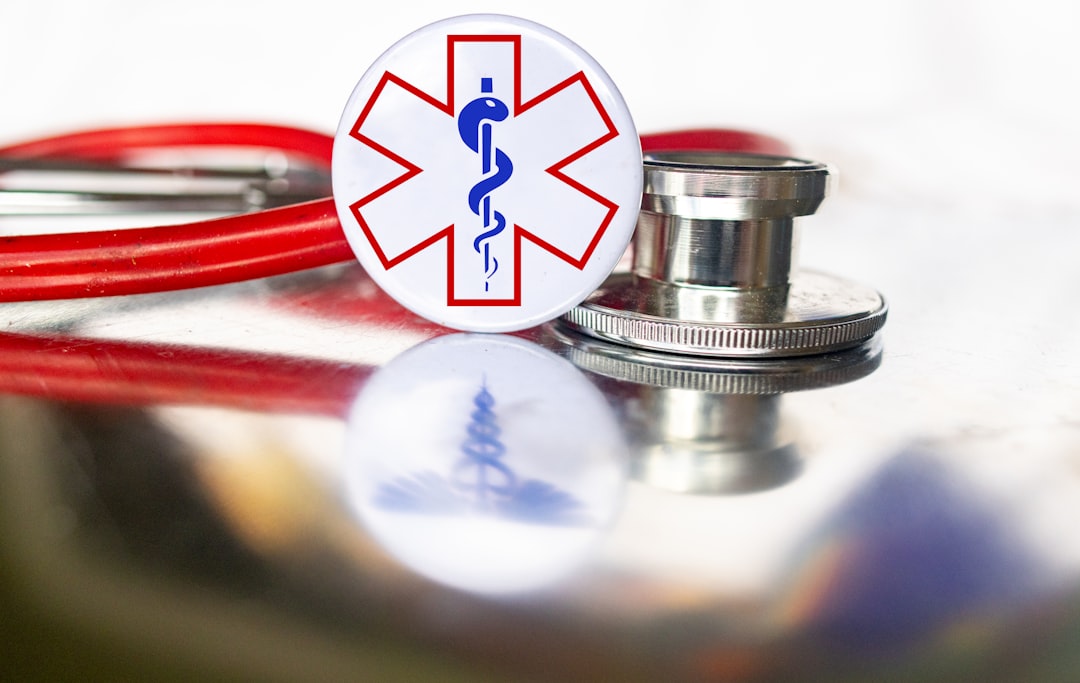

Engage prospects with a scan and streamline customer engagement with FREE QR code marketing tools by Sona – no strings attached!
Create a Free QR CodeFree consultation

No commitment

Engage prospects with a scan and streamline customer engagement with FREE QR code marketing tools by Sona – no strings attached!
Create a Free QR CodeFree consultation

No commitment
Basic Life Support (BLS) certification providers operate at the intersection of high-stakes workforce credentialing and demanding consumer expectations. Whether clients are healthcare professionals, educators, or first responders, choosing the right BLS certification course can influence not just compliance but real outcomes in job readiness and patient safety. At the same time, providers navigate diverse buyer needs: administrators prioritizing credential verification, clinicians looking for flexible schedules, and students comparing costs and accreditation. The evaluation and enrollment journey spans offline discovery and digital research, which means providers need a fast, reliable way to capture attention and convert it into action. Start creating QR codes for free.
Traditionally, BLS certification providers have relied heavily on printed brochures, paper registrations, and physical sign-up sheets at events. These analog tactics slow down conversions, introduce manual errors, and limit visibility into who is engaging. High-value prospects often see course information in a hospital break room or at a hiring fair but leave without an immediate way to register or request more information. That lack of a digital bridge leads to missed opportunities and poor attribution.
Today’s digitally savvy students and professionals expect seamless transitions. They want to move from discovering a certification opportunity to enrolling or verifying credentials in just a few taps. When every offline interaction can represent a potential conversion or future upsell, it becomes critical to centralize data and track engagement across all touchpoints. QR codes are a strategic lever for BLS certification providers because they allow you to capture qualified leads from previously anonymous print and event interactions, eliminate manual data gaps, and measure which physical placements and messages truly drive business outcomes.

BLS certification providers continue to struggle with incomplete prospect tracking, especially when print collateral or in-person events make it difficult to identify which professionals are interested but not ready to commit. Paper sign-up sheets frequently result in lost forms, inaccurate entries, and untracked high-value prospects. The result is wasted staff time and uncertainty about return on investment for offline campaigns. QR codes bridge this critical gap by instantly moving prospects from static materials and on-site interactions to digital environments where intent and engagement are captured, and where every scan can trigger follow-up or personalized messaging.
A strategic framework starts with mapping the typical offline-to-online journey. For example, a nurse sees a flyer in a staff lounge, scans a QR code to view upcoming classes, and completes a mobile-friendly pre-registration form. Or a hospital educator scans a QR code on a partner brochure to request a group training proposal. In both cases, scan activity is tracked and routed to your CRM, providing actionable context such as source location, campaign, and timing. Over time, these signals inform which placements and offers work best for each role and organization.
Some providers report significant reductions in registration delays and data errors after rolling out QR-driven onboarding. By routing each scan into a segmented follow-up sequence, they convert a larger share of casual interest into paid enrollments and renewals, while uncovering new audience pockets that were previously anonymous.

BLS providers often face a pattern of invisible interest: decision-makers and high-potential learners encounter certification opportunities without formally expressing intent. Without a simple way to capture that interest at the moment it arises, follow-up is difficult and attribution remains cloudy. QR codes solve this by making it effortless to act, creating a measurable bridge between physical assets and digital funnels.
In the BLS context, speed and clarity are everything. A staff nurse might have only a two-minute break to check renewal dates, or a school administrator may need to verify credentials for a group of new hires quickly. QR codes reduce friction by allowing immediate access to the right destination. They also enable dynamic content management, so you can update the link behind a code as schedules or regulations change. This ensures that printed assets remain useful long after distribution.
Technology has made it possible to recover lost opportunities, nurture qualified leads by lifecycle stage, and respond to shifts in demand with accurate, timely data. QR codes are the onramp that turns each offline impression into measurable progress.

Incomplete or outdated data makes it hard to personalize outreach and segment audiences effectively. Traditional analytics rarely indicate which person engaged with which asset, which limits retargeting precision and wastes budget. Using multiple QR formats and destinations allows BLS providers to tie each interaction to an actionable context, creating a cleaner picture of audience intent across roles and organizations.
Your mix should reflect the outcomes you want to drive. For enrollment, send scanners to a pre-filled form that captures only essential data, then enrich in your CRM later. For employer validation, use secure verification endpoints. For nurturing, link to micro-resources like checklists, schedule previews, and calendar invites. With dynamic QR functionality, you can switch destinations or update messaging without reprinting.
Dynamic QR solutions make post-print updates easy while preserving campaign performance data. For BLS programs, this ensures compliance, protects your brand, and keeps the learner journey consistent even as operational details evolve.

Many offline engagements with high-fit leads go untracked and unmonetized, especially at events, in direct mail, or through in-hospital collateral. Providers are left guessing which channels are working and where potential enrollments are being lost. QR codes unlock the offline-to-online connection at each touchpoint so you can measure, enrich audience profiles, and trigger timely follow-ups.
Start by mapping the physical environments where your audiences engage. Staff rooms, hospital education centers, onboarding packets, EMS stations, school nursing offices, and career fairs each represent moments where interest can convert. Embed a QR code with a clear call to action that matches the context, then route scans into an appropriate destination and follow-up sequence.
Providers who systematically integrate QR codes across all physical materials often see higher conversion rates and better attribution. Over time, you also learn which environments and messages perform best for specific roles such as RNs, EMTs, educators, and administrators.

The absence of a follow-up mechanism at critical learner touchpoints means high intent often goes unconverted. QR codes embed digital calls to action and real-time tracking into familiar physical contexts, ensuring every moment of interest becomes a measurable signal. The following use cases align with the most common BLS workflows and buyer needs.
At minimum, focus on use cases that reduce friction for your top audiences: individual clinicians, group coordinators, and HR teams. Each should connect to a destination that fits the user’s intent, while also capturing data that supports segmentation and future outreach.
These use cases create a foundation that can be expanded with more targeted initiatives such as QR-based group interest forms for hospital educators, QR-driven check-ins for skills labs, and QR-enabled scholarship applications for students in need of financial assistance.
BLS providers often struggle to build robust audiences for retargeting because offline interactions are anonymous and CRM data is incomplete. QR codes at strategic touchpoints solve this by tagging, segmenting, and re-engaging users based on real-world behavior and context. Each scan becomes a signal that helps you tailor messaging by role, motivation, and lifecycle stage.
Use distinct QR codes for each stage of the funnel so you can segment audiences by awareness, consideration, and conversion. Track location, timing, and device to infer context, then sync these signals with your CRM for automated follow-ups. Over time, you can prioritize leads by propensity to enroll or renew, and refine nurture journeys by role such as RN vs. EMT vs. educator.
For a deeper playbook on segmenting and re-engaging high-intent visitors, see Sona’s intent-driven retargeting.
QR codes are not only convenient links. They act as connectors that carry offline prospect signals into centralized digital pipelines. This synchronization minimizes missed targeting, unifies analytics, and supports both tactical improvements and strategic planning for BLS certification providers.
When you treat QR codes as a core part of your marketing mix, every physical asset becomes a measurable touchpoint. The key is consistent design, clear calls to action, and thoughtful placement in environments where your audiences are likely to scan. Combine this with CRM integrations and workflow automation so that every scan triggers a next best action tailored to the individual.
QR codes serve as the offline onramp to your digital marketing engine. A centralized platform like Sona QR helps you manage codes, monitor performance, and sync scan data with your CRM and ad platforms so your analytics reflect the entire journey.
A disciplined process turns QR from a tactical experiment into a reliable growth lever. The following steps help you identify priority use cases, choose the right code type, and deploy with strong creative and measurement.
Start by identifying where you most often lose track of high-value leads: staff lounges, hiring events, or renewal campaigns. Focus on transforming anonymous intent into traceable conversion pathways with clear next steps that match the environment where the scan occurs.
Select between static and dynamic codes based on the level of agility and measurement you require. For trackable, editable campaigns, dynamic codes are almost always the right choice.
Good design and real-world testing ensure scannability and encourage action. Keep your visual hierarchy simple, include a clear benefit, and validate performance in the environments where codes will be used.
Roll out your codes where intent is strongest and distractions are lowest. Adjust size and placement to match the environment, and coordinate with staff to promote scanning at key moments.
Measurement is what turns QR into a compounding asset. Link each physical placement to conversion metrics and iterate based on what the data shows.
Smart providers are reducing manual errors and accelerating registration timelines by treating QR deployment as a structured, data-driven process. Over time, you can systematize top-performing placements and creative, then scale across regions and partner networks.
A persistent pain point for BLS certification providers is the inability to attribute offline interactions to enrollment, renewal, and verification outcomes. Without end-to-end visibility, it is hard to justify investments or to refine campaigns with confidence. Modern tracking makes each scan a measurable event that illuminates the journey from initial interest to revenue and recertification.
To make this work, define the metrics that matter at each stage. For awareness, track scan volume by placement and role. For consideration, track conversion to form start and content engagement. For conversion, track enrollments, payments, and verification events. Feed these data points into your CRM to drive timely outreach, and use attribution models to understand which combinations of placements and messages drive the highest value.
With a toolset like Sona QR for healthcare and Sona.com, you can capture real-world engagement and connect it to pipeline and closed revenue. Identity resolution, CRM sync, and multi-touch attribution unify fragmented touchpoints across buying stages, so your team has a complete picture from first scan to recertification.
Even as QR adoption grows, providers can still lose high-value interactions when scans are not tied to clear actions or when follow-up is handled manually. Sustained success hinges on ensuring every scan produces a complete story: who scanned, what they wanted, and how you responded.
The most effective programs combine precise placements with automation. Make the next step obvious, remove friction from forms, and trigger reminders at moments when interest is likely to be high. Lean into creative deployments that fit healthcare workflows, such as QR codes on certification badge clips, renewal postcards, or simulation lab posters where learners are already thinking about skill validation.
Some providers are streamlining compliance workflows by placing QR codes directly on badges and certificates. This enables instant credential verification at the point of care or during audits and turns everyday interactions into conversion opportunities for renewals and advanced courses.
The risks of lost opportunity and unseen engagement are too great for BLS certification providers to rely only on manual workflows and incomplete data. QR codes, when deployed thoughtfully across every learner interaction, convert static moments into dynamic, trackable signals. They help providers capture demand at the source, shorten the path to enrollment or renewal, and maintain a clear line of sight from scan to revenue and compliance.
By centralizing scan data and integrating it with CRM and marketing tools, providers can segment by role and motivation, automate personalized follow-ups, and invest in the placements that reliably convert. This produces a better experience for learners and administrators, while ensuring that each marketing dollar and staff hour contributes to measurable growth.
BLS certification providers operate in a market where every offline and online interaction carries the potential for conversion, upsell, or missed revenue. QR codes tie previously anonymous, in-person, and print engagements back to your digital engine so you can see and optimize what truly drives outcomes. As the field continues to digitize, embedding QR codes across programs, materials, and campaigns gives providers the agility and foresight needed to strengthen both business and educational results. With platforms like Sona QR for code management and Sona.com for attribution, you can start capturing and converting more of the demand that already exists inside your facilities, events, and partner networks.
QR codes have revolutionized the BLS certification provider industry by transforming traditional certification processes into seamless, measurable engagement opportunities. Whether it’s streamlining customer onboarding, enhancing learner experiences, or accelerating certification renewals, QR codes enable instant access to vital resources while capturing real-time data to optimize every interaction.
Imagine effortlessly tracking which marketing materials drive the most sign-ups or knowing exactly when a candidate completes their certification—all without cumbersome paperwork. With Sona QR, you can create dynamic, trackable QR codes that update instantly without reprinting, connect every scan to meaningful outcomes, and gain insights that directly impact your growth. No missed leads, no lost opportunities—just smarter, more effective campaigns.
Start for free with Sona QR today and turn every scan into a certified conversion and a stronger pipeline for your BLS certification business.
BLS certification providers include organizations like the American Red Cross and the American Heart Association, which offer accredited courses for healthcare professionals, educators, and first responders.
Choose a reputable BLS certification provider by considering accreditation, course flexibility, cost, the ability to verify credentials, and the provider's use of digital tools like QR codes for seamless enrollment and verification.
To obtain BLS certification, you typically enroll in a course through a provider's website or QR code, complete the training including any prerequisites, pass required skills or knowledge assessments, and receive a certificate that may include a QR code for verification.
The cost of BLS certification varies by provider and course format, and providers often use dynamic QR codes to update pricing information without reprinting materials.
BLS certifications generally require renewal every two years, and providers offer QR code-enabled renewal portals to simplify the process and prevent lapses.
Having a BLS certification ensures job readiness, compliance, patient safety, and allows employers to verify credentials easily, which benefits healthcare professionals, educators, and first responders.
Yes, many BLS certification providers offer online enrollment, renewal, and credential verification options often accessible via QR codes for a fast and mobile-friendly experience.
You can verify a BLS certification using secure verification QR codes found on certificates or staff ID cards that link to official validation portals maintained by providers.
BLS certification courses near you can be found by scanning QR codes on flyers, hospital signage, or event materials that direct you to location-based schedules and enrollment forms.
While both provide accredited BLS certifications, differences may include course content focus, renewal processes, and digital tools integration; the article does not specify detailed distinctions.
Use Sona QR's trackable codes to improve customer acquisition and engagement today.
Create Your FREE Trackable QR Code in SecondsJoin results-focused teams combining Sona Platform automation with advanced Google Ads strategies to scale lead generation

Connect your existing CRM

Free Account Enrichment

No setup fees
No commitment required

Free consultation

Get a custom Google Ads roadmap for your business






Launch campaigns that generate qualified leads in 30 days or less.
